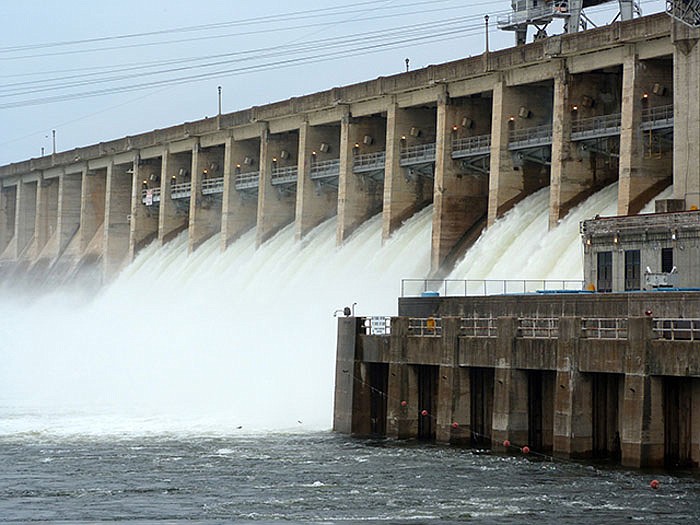Because of dry conditions this fall and winter, Ameren Missouri has begun its annual winter lake level drawdown at Lake of the Ozarks.
Warren Witt, director of hydro operations at Ameren Missouri, said the lake level is typically around 659 feet above sea level this time of year - with a full reservoir level at 660 feet. The drawdown would typically begin around the middle of January. However, Ameren has already brought the lake level down about 2 feet lower than normal, about 657 feet above sea level.
"Further drawdown is dependent on weather and power markets. If we don't experience measurable precipitation, just running the normal minimum flows will continue to drop the lake," he said. "With enough precipitation to at least maintain the current lake level around 657 feet, I would expect to start dropping the lake further (below 657 feet) in late January or early February."
The lake and river level fluctuates during this time for several reasons. Witt said the drawdown usually takes place during a four- to six-week period.
"The drawdown occurs as we generate power to meet the system peak demands," he said. "This normally happens through short duration runs
in the two- to 12-hour range where we go from minimum flow of 900 (cubic feet per second) to full power generation flow around 36,000 (cubic feet per second)."
Despite this year's drawdown being ahead of schedule, Ameren estimates the lake level to be at the projected low of 654 feet above sea level by the end of February. Per Ameren's Lake Level Guide Curve, they will start raising the lake level back to full pool between the first of April and by the middle of May.
Ameren Missouri also generally lowers the water level during wintertime to reduce the possibility of flooding during spring rains. The Osage River level will also fluctuate when Ameren Missouri's Bagnell Dam releases water to meet increased electricity demand.
"The amount of river rise depends on how high in electric we go and how long we maintain that amount of generation. If we go from minimum flow to full generation for an extended period of time, the river level can rise about 10-14 feet at the dam with the amount of level increase being continuously less as you move further down river," Witt said.
Property owners are encouraged to take appropriate measures to protect their docks from lower water levels, ice and other winter conditions that routinely occur at this time of year.
Witt said all areas of the lake are susceptible to dock damage, as well as areas below Bagnell Dam on the Osage River.
"The amount of current and the level of fluctuation is significantly different on the river than it is on the Lake. The river can fluctuate 10-15 feet a day in level whereas that lake only fluctuates about 6 feet over approximately six weeks," he said.
The current on the river normally prevents ice build-up, but in extreme cold conditions for extended periods of time, the river can freeze over similar to the lake coves, Witt said. If the river does freeze over, when the ice breaks up, the current of the river can move large sections of ice capable of causing major damage to docks.
"On the lake, we experience large sections of ice moving due to wind on the main channel and those ice sections can cause major damage to docks, but mostly on the main channels or large coves," he said.
Witt said docks could be damaged by not sitting level on the bottom or rubbing against the bottom of the river or the lake. Dock cables can also be damaged due to the force of the dock settling.
"Electrical lines can be damaged due to movement of the docks," he said. "We recommend that dock owners contact a bonded dock builder for guidance on what damage can happen and how to best prevent it."
Ameren Missouri offers the following tips to help both Lake and Osage River dock owners minimize the effects of lower Lake levels and other winter conditions:
Below the dam, remove docks from the Osage River before cold weather hits.
Ensure hinges, pins and other connections linking any remaining docks to seawalls or piers have the flexibility to follow water level fluctuations.
Lengthen cables to allow docks to drop as the lake or river levels drop.
Use a dock deicer to help protect docks from ice damage, though a deicer may not provide protection from large ice sheets and blocks.
Ask neighbors to keep an eye on the dock or retain a local dock builder or similar contractor to care for the property when the site is unoccupied.

